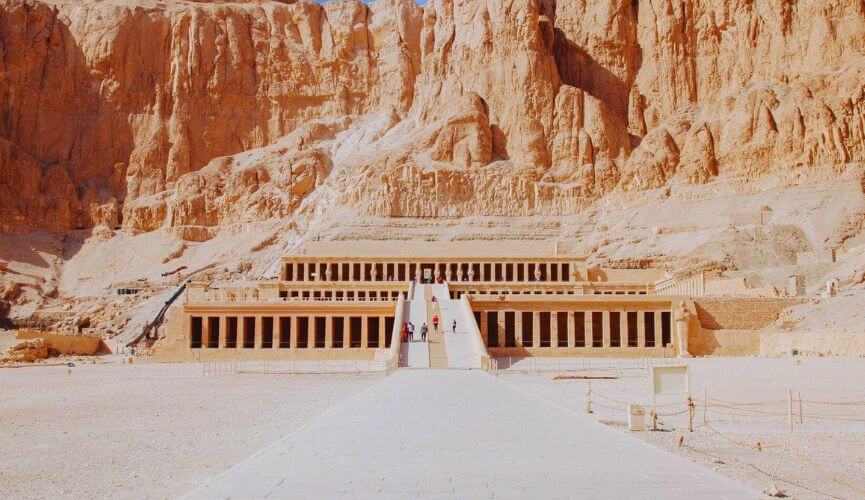The Hatshepsut Temple, also called the Temple of Deir el-Bahri, is a unique and impressive building in Luxor, Egypt. It is on the west bank of the Nile River, near the old city of Thebes. This temple is an excellent example of old Egyptian construction and is considered one of the country’s most influential churches.
Queen Hatshepsut, one of Egypt’s few female pharaohs, had the Hatshepsut Temple built during her time in power. It was a temple for the sun god Amun-Ra, where Queen Hatshepsut was buried. The famous builder Senenmut planned the temple. He made it a gem of an irregular building surrounded by tall rocks and hills.
This blog post aims to learn more about the Hatshepsut Temple, discover its exciting past, and help people understand what makes it so unique. In the following few lines, we’ll look more closely at the different parts of the temple, such as the main door, the courtyard with the columns, the church, and the shrine. We’ll also look at the paintings and writing on the walls, which show essential parts of Queen Hatshepsut’s life and time in power.
When people go to the Hatshepsut Temple, they will be amazed by its size, scale, detailed features, and beautiful art on its walls. This temple is an excellent example of how creative ancient Egyptian artists and builders were, from the enormous columns that line the collonaded courtyard to the beautifully painted reliefs of hunting trips and fights. The Hatshepsut Temple is a must-see for anyone interested in history and buildings or wanting to see something interesting.
Overview of Hatshepsut’s Reign
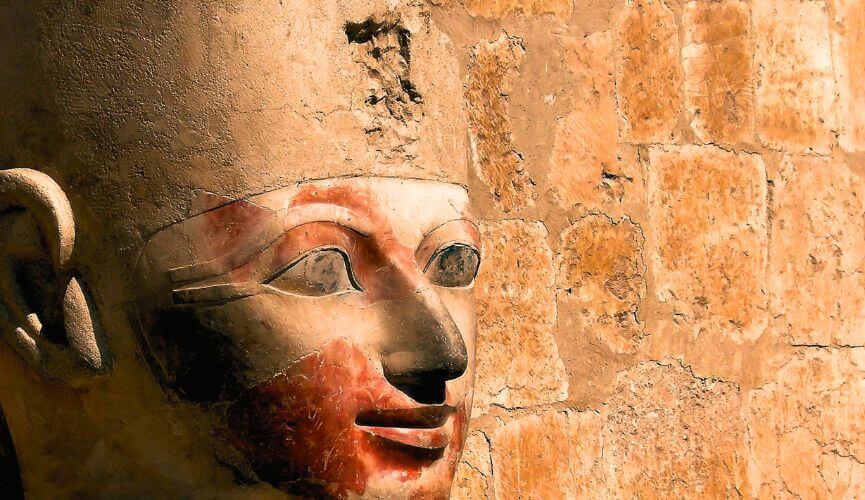
Hatshepsut’s time as ruler in ancient Egypt is known for her accomplishments. Men ruled Egypt before Hatshepsut, so her rise to power was unheard of. Her rule ran from 1479 to 1458 BCE, over 20 years. She did many influential cultural and building projects throughout the kingdom during that time.
After her husband and half-brother, Thutmose II died, Hatshepsut took over. She and Thutmose II had a daughter named Neferure. Hatshepsut made herself the guardian of their young son, Thutmose III, so that she could keep her power. But in the end, Hatshepsut was brave enough to call herself queen. This was the start of significant political and cultural changes in Ancient Egypt.
During her time in power, Hatshepsut was known for how much she changed Egyptian culture. She gave the arts a lot of attention and supported music, writing, and building. Many significant buildings and churches were built during her time in power, such as the Hatshepsut Temple in Luxor. The temple’s size and beauty show how much Hatshepsut cared about the arts. It is one of the most impressive works of architecture from that time.
The Hatshepsut Temple was built in the 15th century BCE to honour the god Amun. It was made by the builder Senenmut, who was thought to have been Hatshepsut’s assistant and maybe even her boyfriend. The temple stands out because of its unusual design. It is cut into a limestone cliff, which gives it a striking look. The temple’s size and form show how creative and skilled Hatshepsut and her kingdom were as artists and builders.
Overall, Hatshepsut’s rule was a turning point in the history of Ancient Egypt. Her rise to power and the political and cultural changes she made afterwards significantly impacted how the kingdom grew and what it left behind. The Hatshepsut Temple is a beautiful reminder of how successful she was, and it is still an essential piece of culture that millions of people visit every year.
Architecture and Design of the Hatshepsut Temple
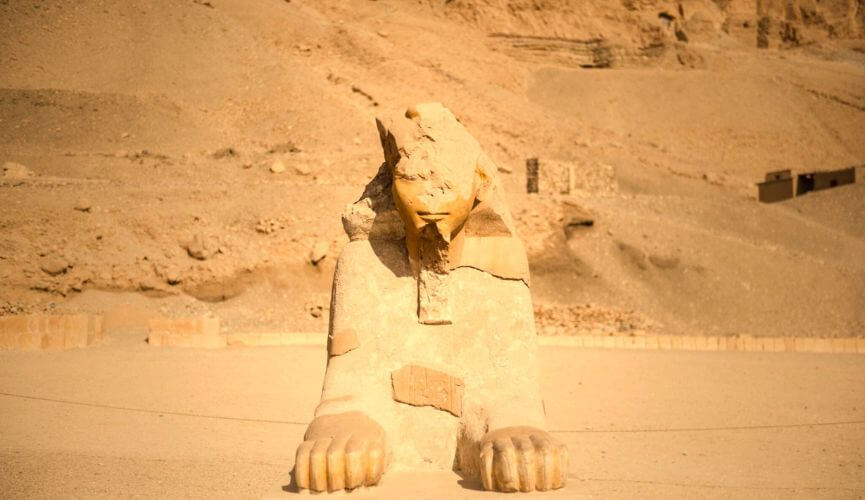
- The Hatshepsut Temple is an excellent example of how well ancient Egyptians built and designed things. The plan and construction of the temple are unique. It has a large terrace with columns, a hypostyle hall, and three levels of passageways and rooms. The most impressive part of the building is the centre ramp that goes up to the top level. Many detailed paintings and reliefs on the ramp tell the story of Hatshepsut’s life and rule.
- The paintings and reliefs inside the Hatshepsut Temple are also well-known. Scenes from Hatshepsut’s life, as well as religious and mythological figures, are shown in these detailed designs. The reliefs are made with accuracy and unmatched detail, giving us a unique look into the world of ancient Egypt. People can be amazed by the people, animals, and buildings that have been carefully carved into the walls of the temple.
- The decorations and style of the Hatshepsut Temple are also essential because of what they mean. The planning and decoration of the temple were carefully planned to send a message about Hatshepsut’s rule and how she related to the gods. For example, the centre ramp of the temple was meant to show how the sun god Ra moved across the sky. The temple is also decorated with many symbols indicating that Hatshepsut was a powerful and legal master.
Ultimately, the Hatshepsut Temple is a true gem of ancient Egyptian design and building. Its design, decorations, and paintings show how skilled and creative the ancient Egyptians were, giving us an exciting look into their world. The Hatshepsut Temple is a must-see for anyone interested in architecture or old history.
Exploration of the Temple’s Features and Artifacts
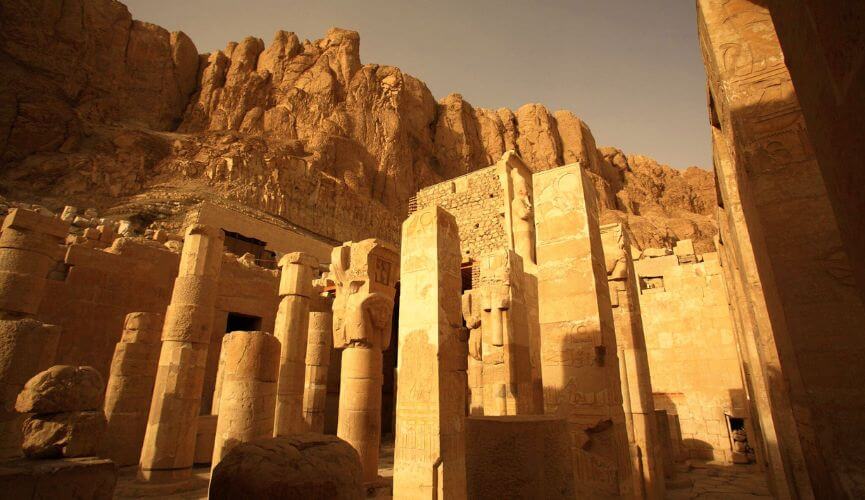
- The grand entry and ramp to the Hatshepsut Temple are two of its most noticeable features. The ramp is limestone and leads up to the first of three steps. On either side of the ramp are two beautiful figures of Hatshepsut. The ramp helped people get to the temple and showed how powerful and in charge the queen was.
- Another exciting thing about the Hatshepsut Temple is that it has three levels. People think that the colonnades, ramps, and figures on each level played different parts in the religious and civil life of the temple. The middle and upper terraces were probably used for rites and gifts, while the lower deck was perhaps for celebrations and processions.
- The items found inside the Hatshepsut Temple tell us a lot about how ancient Egyptians lived and what they thought about. There are images of Hatshepsut that show her as a queen, a god, and a mother, among other things. The temple’s interior also has a lot of hieroglyphics, which are complicated religious and historical writings that tell us more about the culture and customs of the kingdom.
- In the end, looking at the features and objects of the Hatshepsut Temple is an exciting experience that lets people feel like they are in ancient Egypt. With its grand entry, three tiers, and an extensive collection of artefacts, the temple is a reminder of a bygone time and a celebration of one of Egypt’s most important kings’ outstanding achievements.
Restoration and Preservation Efforts of the Hatshepsut Temple
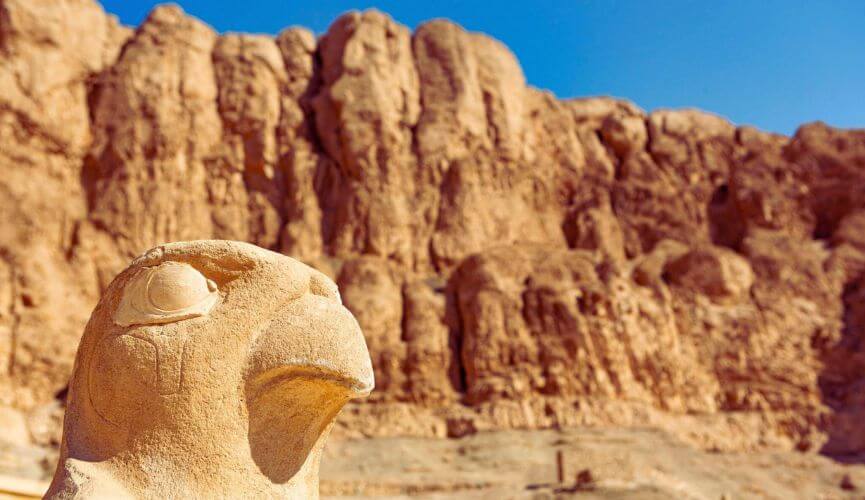
The Hatshepsut Temple is a real gem of ancient Egypt. It is part of the vast complex of the old city of Thebes. The temple was built more than 3,500 years ago. Over the years, it has been fixed and kept in good shape so future generations can enjoy it.
Howard Carter, an Egyptologist, did the first known work to fix up the temple at the beginning of the 20th century. Carter, known for finding Tutankhamun’s body, understood the temple’s importance and worked hard to fix many of its crumbling parts. Since then, many other researchers and professionals have helped restore and protect the spot.
The Hatshepsut Temple has been the site of several ongoing repair projects in the past few years. Some of these projects are meant to protect the temple from the challenging desert climate and keep the temple’s beautiful buildings from falling apart even more. These projects also aim to make the temple easier for guests to get to and ensure the place is safe for them to explore.
It is essential that work is being done to fix up and protect the Hatshepsut Temple. The building is an integral part of the world’s past and a good part of the world’s heritage. So, keeping it around so that people in the future can enjoy it is a job that must be addressed. Caring for this temple is more important than keeping an old building around. It’s a place where people can learn about a time and way of life that no longer exists and get ideas from it.
In the end, repair and maintenance attempts are significant to ensure the Hatshepsut Temple stays the same. These efforts will make sure that this old wonder stays safe and lasts for many years to come. By caring for the building, we learn about the past of all people, which is an essential tool for the future. Taking care of this old site is a way to protect our history and an investment in future generations, who can continue to enjoy and learn from the Hatshepsut Temple’s historical basis.
Ultimately, the Hatshepsut Temple is a fantastic building that shows how grand and essential ancient Egypt was. It is one of the most important buildings in Egypt because it shows how clever, creative, and brave one of Egypt’s most famous queens was.
The temple is full of detailed carvings, tall columns, and beautiful statues that show how skilled the ancient Egyptian builders and artists were. It is an excellent example of the design of tomb temples from the New Kingdom, and it shows how far art and culture had come during that time.
If you are interested in old history and culture, visit Egypt, the Hatshepsut Temple, and other historical places. It is a fantastic experience that will give you a deep respect for what the ancient Egyptians did and how they lived. Every tourist should take this trip at least once in their lives.
If you’re planning a trip to Egypt, there are plenty of options for exploring all it offers. Egypt vacation packages can be a great way to experience the country, with options for guided tours, visits to historical sites, and stays in luxurious hotels. Egypt Day tours are an excellent option for those who want to see the highlights of Egypt in less time. From Cairo to Luxor, these tours offer a glimpse into the rich history and culture of the country. And for a truly unforgettable experience, an Egypt Nile cruise is a must-do. Sailing down the river, you’ll see some of Egypt’s most iconic sites and enjoy the comfort of a luxury cruise ship. No matter how you explore Egypt, you’ll surely come away with memories that will last a lifetime.
